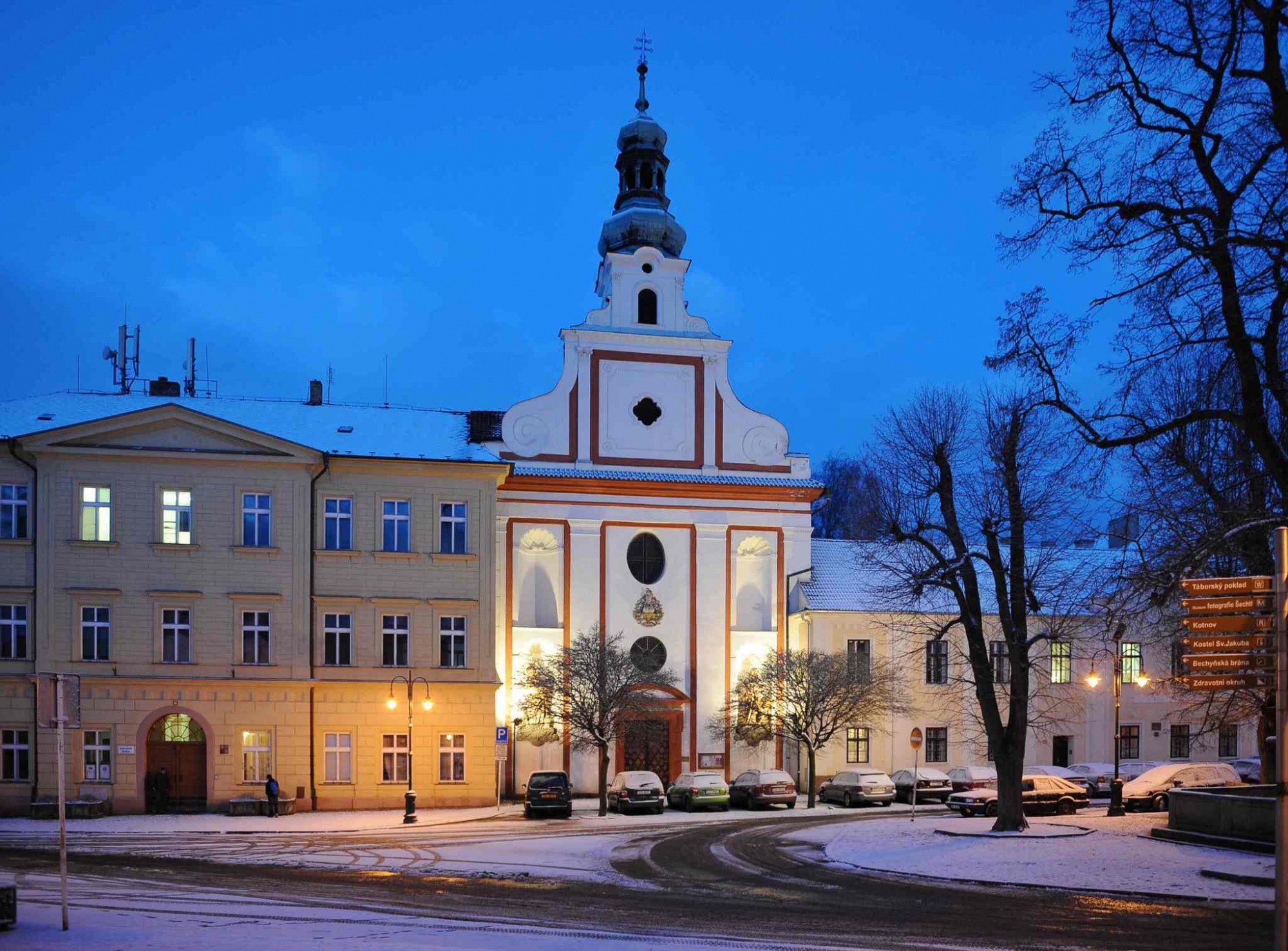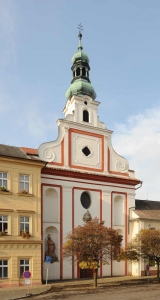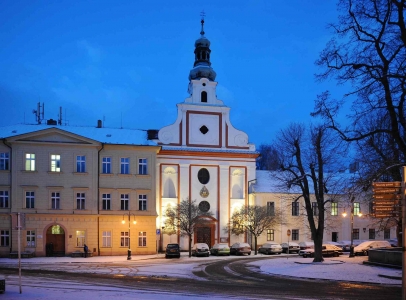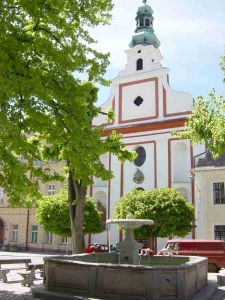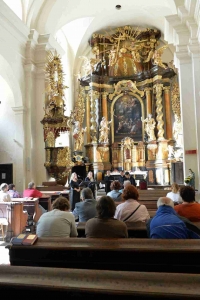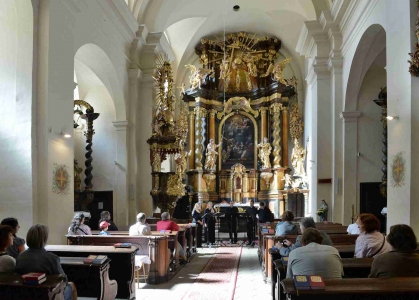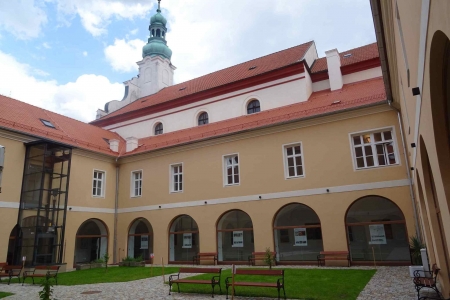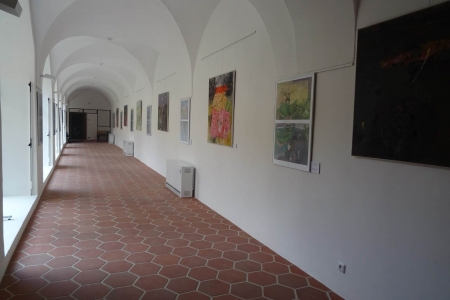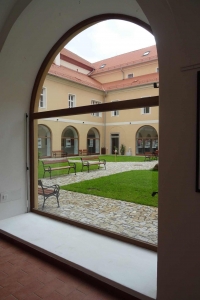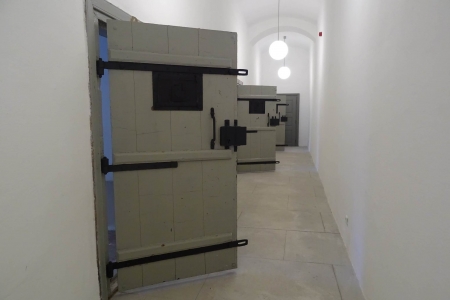Monastery Church of the Birth of the Virgin Mary
The complex of buildings in Mikuláš of Hus Square (formerly Monastery Square) provides a lot of evidence of the eventful history of the town.
After the defeat of the troops of the Czech protestant estates at the battle of Bílá Hora (White Mountain) in 1621, inhabitants of the Czech Lands were required to convert to Catholicism. And neither were the citizens of Tábor an exception. Members of the monastic order of barefoot Augustinians were summoned to Tábor to preach the new religion. As a place for their monastery they chose a group of abandoned and ransacked houses; the cloister was designed by the architect Antonio de Alfieri, an Italian living in Prague. The corner stone was laid in 1642, and by 1666 the construction was finished. The highlight of the complex was the church dedicated to the Virgin Mary. Its front is in the Classical Baroque style and it is decorated with statues of St. Augustin, the patron of the order, and his mother, St. Monica. Most of the valuable Baroque interior equipment, which had been manufactured in a local carving workshop, has been lost. The church is not open to the public. At the beginning of the 19th century the monastery ceased to exist and the building was converted into a prison. Today, the local museum has its headquarters and depository there.
 Sights
Sights
